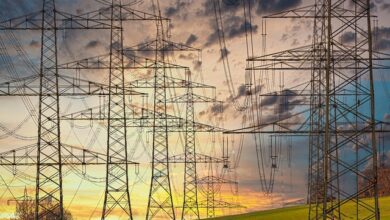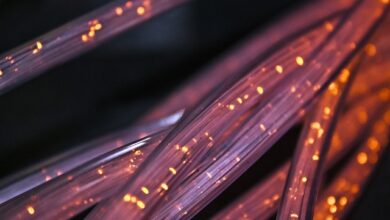Precision Agriculture Technologies Optimize Crop Yield

Are you ready to witness a revolution in agriculture? Prepare to be amazed as precision agriculture technologies take center stage in optimizing crop yield. Gone are the days of relying solely on traditional farming methods. Today, farmers have an array of cutting-edge tools at their disposal to maximize productivity and minimize waste. Let’s delve into the fascinating world of precision agriculture and explore how these innovative technologies work wonders for crop production.
Imagine a world where each plant receives personalized attention, just like a tailor-made suit. Precision agriculture makes this a reality by leveraging advanced sensors, drones, and data analytics to gather comprehensive information about crops. These technologies enable farmers to make informed decisions based on real-time data, ensuring optimal growing conditions for every single plant.
One of the key players in precision agriculture is remote sensing. By utilizing satellites or aerial imagery, farmers can obtain detailed insights into crop health, moisture levels, nutrient deficiencies, and even detect potential pest infestations. Armed with this knowledge, they can swiftly address any issues before they escalate, saving valuable resources and safeguarding crop yields.
Another game-changer in precision agriculture is the use of drones. These unmanned aerial vehicles soar above fields, capturing high-resolution images and collecting vital data. Equipped with specialized cameras and sensors, drones provide a bird’s-eye view of the entire farm, helping farmers detect irregularities and optimize irrigation strategies. They can even deliver targeted treatments to specific areas, minimizing the need for broad-spectrum applications and reducing environmental impact.
Data analytics takes the spotlight as the backbone of precision agriculture. By harnessing powerful algorithms and machine learning techniques, farmers can make sense of vast amounts of data collected from various sources. This enables them to identify patterns, predict outcomes, and make well-informed decisions regarding planting, fertilization, pest control, and harvesting. With precision agriculture, farming becomes a science that combines the art of nurturing plants with cutting-edge technology.
Revolutionizing Farming: How Precision Agriculture Technologies Maximize Crop Yield
Have you ever wondered how farmers are able to produce more crops with less land and resources? The answer lies in the innovative world of precision agriculture technologies. This groundbreaking approach to farming is transforming the way we grow crops, maximizing yield and efficiency like never before.
Precision agriculture utilizes state-of-the-art technologies to gather accurate data about soil conditions, weather patterns, and crop health. Armed with this information, farmers can make informed decisions on when and where to plant, fertilize, irrigate, and harvest their crops. It’s like having a personal agricultural assistant, guiding farmers towards optimal results.
One key aspect of precision agriculture is the use of remote sensing technologies, such as drones and satellites. These high-tech tools provide farmers with a bird’s-eye view of their fields, capturing detailed images and data. By analyzing this information, farmers can identify areas of concern, such as nutrient deficiencies or pest infestations, and take targeted action to address them. This targeted approach minimizes waste and ensures that crops receive the precise care they need, resulting in healthier plants and higher yields.
Another game-changer in precision agriculture is the adoption of smart irrigation systems. Traditional irrigation methods often lead to water wastage, as fields are either over- or under-watered. However, with precision agriculture, sensors embedded in the soil monitor moisture levels and transmit real-time data to farmers. This enables them to tailor watering schedules and amounts based on actual crop needs. By providing crops with the right amount of water at the right time, farmers can optimize growth while conserving water resources.
Furthermore, precision agriculture embraces the power of big data and analytics. By collecting and analyzing vast amounts of data from various sources, such as weather stations and historical yield records, farmers can uncover valuable insights. These insights help them fine-tune their farming practices, adjust planting and harvesting timings, optimize fertilizer application rates, and predict crop diseases. It’s like having a crystal ball that allows farmers to make data-driven decisions and mitigate risks.

Precision agriculture technologies are revolutionizing farming by maximizing crop yield and efficiency. Through the use of remote sensing, smart irrigation systems, and big data analytics, farmers can optimize their operations and make informed decisions that lead to healthier crops, reduced resource waste, and increased profitability. As we continue to advance in this field, the possibilities for improving global food production are endless. The future of farming is here, and it’s precise, sustainable, and bountiful.
From Fields to Data Centers: Harnessing Technology for Optimal Crop Production
Are you tired of hearing about technology revolutionizing different industries? Well, get ready to be amazed once again because the agricultural sector is no exception. In this article, we will explore how technology is transforming crop production from fields to data centers, optimizing results like never before.

Picture this: a farmer walking through vast fields, monitoring crops individually, and manually assessing their needs. It’s a laborious process that often results in inefficiencies and inconsistencies. But thanks to cutting-edge technology, farmers now have access to a plethora of tools that streamline and enhance their efforts.
One such technology making waves is precision agriculture. With the help of sensors, drones, and satellite imagery, farmers can gather real-time data about their fields. This data provides valuable insights into soil conditions, moisture levels, and crop health. By harnessing this knowledge, farmers can make informed decisions on irrigation, fertilization, and pest control, ensuring optimal crop growth.
But the benefits don’t stop there. Artificial intelligence (AI) has also entered the scene, helping farmers analyze the massive amounts of data collected. AI algorithms can identify patterns, predict crop diseases, and even suggest personalized treatment plans. Imagine having an intelligent assistant that can tell you exactly what your crops need, tailored to their specific requirements.
Furthermore, data centers play a crucial role in this technological revolution. They serve as the backbone for processing and storing the vast amounts of agricultural data collected. These centers employ advanced computing power and cloud-based solutions to crunch numbers, run simulations, and generate valuable insights for farmers. They act as the nerve center, facilitating seamless communication between farmers, researchers, and agricultural experts.

The integration of technology into crop production is revolutionizing the agricultural industry. Precision agriculture, AI, and data centers are working together to optimize every aspect of farming, from field management to decision-making. Gone are the days of guesswork and manual labor. Farmers now have access to a wealth of information that empowers them to make informed choices, maximize crop yields, and minimize resource wastage. So let’s embrace this technological marvel and witness the incredible impact it has on our food production systems.
The Future of Farming: Precision Agriculture’s Role in Boosting Crop Yields
The future of farming holds immense promise, and one key player in revolutionizing agriculture is precision agriculture. In this article, we delve into the role that precision agriculture plays in boosting crop yields. So, what exactly is precision agriculture? It’s an innovative approach that integrates technology and data to optimize farming practices and maximize productivity.
Picture this: farmers equipped with advanced sensors and GPS technology, gathering real-time data on soil conditions, weather patterns, and crop growth. With this valuable information at their fingertips, they can make informed decisions and apply targeted interventions precisely where and when they are needed most.
Precision agriculture takes a proactive stance, ensuring that crops receive the right amount of water, fertilizers, and pesticides, minimizing waste and reducing environmental impact. By employing cutting-edge monitoring systems, farmers can detect variations in soil moisture levels, nutrient deficiencies, or pest infestations early on. This enables them to take swift action, addressing potential issues before they escalate and cause significant damage.
Moreover, precision agriculture employs automation and robotics to streamline labor-intensive tasks. Drones equipped with cameras and sensors can monitor vast fields efficiently, capturing high-resolution images that help identify problem areas. Automated machinery, guided by GPS, can perform precise seeding, spraying, and harvesting operations, optimizing resource utilization and reducing human error.
The benefits of precision agriculture extend beyond immediate crop management. The wealth of data collected contributes to the creation of comprehensive digital maps and models. These tools enable farmers to analyze historical trends, predict future scenarios, and devise long-term strategies for sustainable production.
By embracing precision agriculture, farmers can increase crop yields while conserving resources. They can fine-tune their practices to meet the specific needs of each plant, resulting in healthier and more abundant harvests. Additionally, the optimization of inputs such as water and fertilizers reduces costs, making farming more economically viable.

Precision agriculture is poised to shape the future of farming. Through the intelligent use of technology, data, and automation, it empowers farmers to make informed decisions, optimize resource allocation, and achieve higher crop yields. As this innovative approach continues to evolve, we can expect it to play an increasingly vital role in meeting the global demand for food while ensuring sustainability in agricultural practices.
Unleashing the Power of AI: How Precision Agriculture Transforms Crop Productivity
Introduction:
Imagine a world where farms are transformed into highly efficient, data-driven ecosystems. Advancements in technology, particularly Artificial Intelligence (AI), have revolutionized the agricultural landscape. One such innovation, precision agriculture, is rapidly gaining momentum for its ability to enhance crop productivity like never before. In this article, we explore how AI is unlocking the full potential of precision agriculture, ushering in a new era of sustainable farming practices.
Harnessing AI for Precision Agriculture:
Precision agriculture leverages AI algorithms and sophisticated sensors to collect and analyze vast amounts of data from fields to facilitate informed decision-making. By combining machine learning, remote sensing, and real-time monitoring, farmers can gain invaluable insights into their crops’ health, optimizing resources while minimizing environmental impact.
Optimizing Resource Allocation:
AI-powered precision agriculture empowers farmers with accurate information on soil moisture levels, nutrient content, and pest infestations, allowing for precise resource allocation. By precisely applying fertilizers, water, and pesticides only where needed, farmers can minimize waste and maximize efficiency. This targeted approach not only reduces costs but also minimizes the environmental footprint of farming activities.
Early Detection and Intervention:
Detecting crop diseases and pests early is crucial for preventing widespread damage. AI-enabled technologies, such as drones and satellite imagery, enable rapid and comprehensive field surveillance. By analyzing these images using AI algorithms, farmers can identify subtle changes in crop health, facilitating early intervention. This proactive approach helps ensure healthier plants and higher yields.
Enhancing Crop Monitoring:
Monitoring crops manually can be time-consuming and prone to human error. AI-powered sensors and Internet of Things (IoT) devices automate data collection, providing real-time updates on temperature, humidity, and other vital parameters. Farmers can monitor these variables remotely and receive alerts when critical thresholds are reached, enabling prompt action. With AI, crop monitoring becomes more precise, efficient, and responsive.

Predictive Analytics for Yield Optimization:
AI excels in complex data analysis, enabling predictive analytics that can revolutionize crop yield optimization. By analyzing historical data, weather patterns, and other relevant factors, AI systems can generate accurate forecasts of crop yields. Farmers can use these insights to make informed decisions about planting schedules, crop rotation, and market demand, maximizing profitability.
Conclusion:
Precision agriculture, powered by AI, is transforming the way we cultivate crops, ensuring sustainable farming practices and optimizing productivity. The integration of AI-driven technologies allows farmers to make data-backed decisions, leading to efficient resource utilization, early disease detection, enhanced crop monitoring, and improved yield optimization. With AI as a powerful ally, the future of agriculture looks promising, bringing us closer to a world where food production meets the demands of a growing population while minimizing environmental impact.




